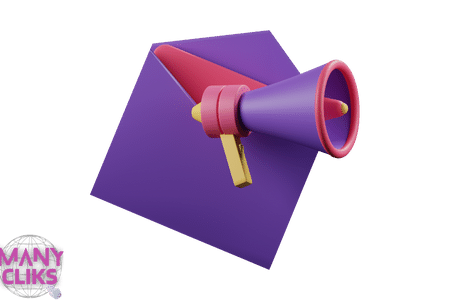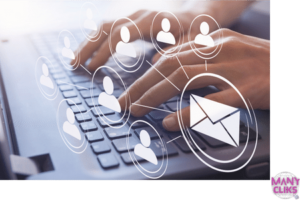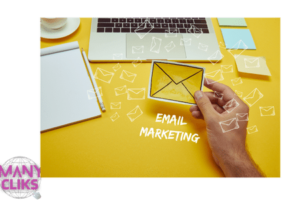
In the competitive world of email marketing, standing out and connecting with your audience is crucial. One effective strategy to achieve this is through personalization. By tailoring your emails to the individual needs and preferences of your subscribers, you can significantly increase engagement and drive conversions. In this article, we will explore the power of personalization in email marketing and provide you with actionable tips to implement it in your campaigns.
Summary of Content
1. Understanding the Importance of Personalization
Delivering personalized content to subscribers brings several benefits. Firstly, it helps establish a deeper connection and build trust with your audience. When people feel understood and valued as individuals, they are more likely to engage with your brand and develop a sense of loyalty. Secondly, personalization enables you to provide relevant and timely information, ensuring that your subscribers receive content that aligns with their specific interests and stage in the buyer’s journey. This leads to higher engagement and increased chances of conversion. Lastly, personalization allows you to stand out in a crowded inbox and differentiate your brand from competitors who rely on generic mass emails.
You Might Like:
Numerous brands have achieved remarkable results through the effective use of personalization in their email marketing campaigns. For instance, clothing retailers often send personalized recommendations based on customers’ past purchases and browsing behavior, resulting in higher conversion rates and customer satisfaction. E-commerce platforms utilize personalized cart abandonment emails with tailored incentives, prompting customers to complete their purchases. Personalization has also been successful in the travel industry, where companies send customized offers and destination recommendations based on travelers’ preferences and past bookings, leading to increased bookings and customer loyalty. These real-world examples demonstrate the power of personalization in driving engagement, conversions, and long-term customer relationships.
2. Collecting and Analyzing Customer Data
Start by gathering basic information such as their name, email address, and any preferences they willingly provide. This foundational data allows you to address your subscribers by name and segment your audience based on their preferences or interests. Additionally, consider collecting data related to their purchase history, browsing behavior, or interactions with your website or previous emails. This information can help you tailor your content, offers, and recommendations specifically to each subscriber’s needs and preferences.
Implementing strategies for gathering customer data effectively and ethically is essential for successful personalization. You can leverage various techniques, such as utilizing website forms, conducting surveys or quizzes, implementing user accounts, or using lead magnets to incentivize data collection. It’s important to ensure transparency and obtain explicit consent when collecting and storing customer data, adhering to data privacy regulations. By maintaining a clear value exchange and respecting your subscribers’ privacy, you can foster trust and willingness to provide accurate and relevant information.
Once you have collected the necessary data, the next step is to analyze it effectively to gain insights. Utilize tools and techniques such as customer relationship management (CRM) systems, email marketing platforms with built-in analytics, and data visualization tools. Analyzing customer data allows you to identify patterns, preferences, and behavior trends.
3. Segmenting Your Audience for Targeted Messaging
By dividing your audience into meaningful segments, you can deliver highly relevant and targeted messages that resonate with each group. Start by analyzing your subscriber data and identifying common characteristics, such as demographics, interests, purchase behavior, or engagement levels. This information will serve as the foundation for creating distinct segments that represent different subsets of your audience.
Once you have segmented your audience, it’s time to create personalized content that caters to each segment’s preferences and interests. This can involve customizing email subject lines, email body content, offers, or product recommendations based on the specific segment’s characteristics. For example, if you have identified a segment of “frequent buyers,” you can send them exclusive promotions or loyalty rewards. On the other hand, if you have a segment of “prospective customers,” you can focus on educational content and nurturing their interest. By aligning your messaging with the unique needs of each segment, you increase the chances of engagement, conversions, and long-term customer loyalty.
4. Dynamic Content and Automated Personalization
Leveraging dynamic content in your email marketing allows you to deliver tailored messages that are highly relevant and engaging to your subscribers. By using advanced email marketing platforms, you can automate the process of personalization and dynamically customize the content based on each recipient’s preferences, behavior, or past interactions. This approach ensures that your emails are not only personalized but also timely, delivering the right message to the right person at the right time.
One powerful example of dynamic content is product recommendations based on a customer’s browsing or purchase history. By analyzing the data, you can present personalized product suggestions that align with the individual’s interests and preferences. This level of personalization enhances the customer experience, increases the likelihood of conversion, and fosters a sense of connection with your brand. Additionally, dynamic content can include elements such as personalized subject lines, images, or call-to-action buttons, further enhancing the overall effectiveness of your email campaigns.
Conclusion:

As you can see, personalization plays a pivotal role in the success of your email marketing efforts. By understanding the importance of personalization, collecting and analyzing customer data, segmenting your audience, and utilizing dynamic content, you can create highly targeted and engaging email campaigns. Take the time to personalize your emails and reap the rewards of increased open rates, higher click-through rates, and improved conversions. Start implementing these strategies today and watch your email marketing soar to new heights.
Ready to take your email marketing to the next level with personalized content? Visit ManyCliks.com.au to learn more about leveraging dynamic content, automating personalization, and boosting engagement in your email campaigns. Start personalizing your emails today and watch your audience engagement and conversions soar. Visit ManyCliks.com.au now!
Do You Need A Website? How To Kickstart Your Online Business? Are You Facing Any Doubts? Contact Us Today At Contact@Manycliks.Com.Au. Follow Us @Manycliks.







